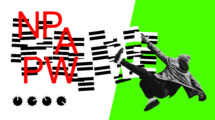The CONNECT interview: Juan Pablo Carvallo
Juan Pablo Carvallo is the Executive Director of CEDIA, the Ecuadorian national research and education network. In conjunction with the celebrations of the NREN’s 15th anniversary, CONNECT caught up with him to talk about his plans for CEDIA’s involvement and influence in the development of Ecuador.
Juan Pablo, tell us about your life at CEDIA
In the years preceding my official role at CEDIA, whilst working as a technical networking consultant for the Ecuadorian universities, I had not really been what you would call an advocate or supporter of the organisation. The network was not being used to the best of its potential, CEDIA’s infrastructure was nearly nonexistent, and the organisation had no visible impact within the country. I didn’t expect to be associated with the NREN during my career, but then something unexpected happened: I was elected CEO of CEDIA. As you can imagine my views have now radically changed.
I started by asking myself some burning questions: what value was CEDIA bringing to our country? How could I help transform the NREN into a valuable asset for all its members? As soon as I accepted my mandate, I renegotiated all interconnection and capacity contracts with providers, and within just three weeks, the network’s capacity increased threefold without added costs for our members. At the first General Assembly I presented my vision for the future of CEDIA: the academic network should be a tool to improve the quality of research in our country – in all fields, not just technology. After ensuring the underlying technology of our network was solid and reliable we developed a cloud-based system, increased the capacity of the network and created a variety of new services for the benefit of our researchers around the country.
What is CEDIA’s impact in Ecuador?
The CEDIA Board enabled me to fund CEPRA, a new programme for academic research in the country. This project invites researchers to submit applications for collaborative projects within a given deadline. The most successful projects win CEDIA’s funding. In order to encourage broad academic collaboration, our programme has stringent requirements: the projects must involve three different universities from different Ecuadorian cities. Thus CEDIA spotted an opportunity and became a catalyst for academic collaboration. The following figures demonstrate the growing success of our initiative: in 2015 we received 12 proposals, this year, in 2017, we received 45! A total of 575 researchers are currently funded by CEDIA!
As a result, the quality of academic research in our country has considerably improved, high quality research papers are being produced and published on a regular basis, the grading of our universities has improved and our researchers are better able to attend international conferences. In short, we have had an impressively positive impact on national research.
CEDIA’s portfolio of services includes a research projects incubator and several programmes designed to support teachers and researchers with different levels of experience and expertise. We are deploying our new network with over 4500 km of fibre optic channels; this will be managed by our own technicians, our own NOC. We are increasing the cloud, we have also deployed several learning object servers for teachers to share materials with students and colleagues, and have also created a superior school with the support of the Brazilian network, in order to provide continuous education to professionals in our country. Our portfolio of services is continuously growing.
We have changed name to stress the importance of our goal as an NREN: we are now Corporación Ecuatoriana para el Desarrollo de la Investigación y la Academia with a focus on research and education in contrast with our previous name that highlighted the Internet service provider aspect. It’s a strategic change aimed at making our goal more visible.
Can you talk to us about your international collaborations and your involvement with GÉANT?
We engaged thoroughly with the RedCLARA-led ELCIRA project (which aimed to expand eduroam, identity federations and collaboration tools across Latin America) and after its completion, we were one of the first NRENs in Latin America to have deployed five additional service components on top of connectivity including: eduroam, federated access integrated into eduGAIN (known as MINGA in Ecuador), videoconferencing and VoIP. All this happened within three months of my appointment.
We have been involved in many international projects such as MAGIC (a RedCLARA-led project which extended the benefits of ELCIRA and shared them with other world regions), and since then eduroam has become valuable everywhere.
With eduGAIN our researchers are now enjoying the advantages of single authentication capabilities. Our CSIRT team has become a member of FIRST, a worldwide organisation in charge of cyber security, contributing to a major decrease in cyber-attacks in the country: in 2015 we recorded 2 million cyber attacks as opposed to just 3,000 in 2017. We have started to supply new links to those members who will be part of the South American link of the BELLA project: our part of the network is already in place! Since 2014 we have been attending TNC in Europe and the I2 Global Summit in the USA.
This year we were delighted to welcome Cathrin Stöver from GÉANT at our 15th anniversary celebrations. Cathrin’s visit had such a positive impact in ways that I didn’t expect and an incredible effect on my team. Cathrin’s role as mentor and facilitator for RedCLARA in Latin American and CEDIA in Ecuador is widely recognised, so my team, who lives and breathes CEDIA, found Cathrin’s presence and words very inspiring. Actually her visit made a lasting impression on all our guests within academia and the national authorities.

Image (L-R): Ing. Juan Pablo Carvallo. Ing. Marcelo Jaramillo Carrera, first Executive Director of Red CEDIA. Cathrin Stöver, Chief Collaboration Officer, GÉANT. PhD. Luis Eliecer Cadenas Marin, Executive Director of Red CLARA. Dr. Nicolay Samaniego Erazo, President of Red CEDIA.
What lies ahead for CEDIA?
CEDIA’s history can be segmented into three different phases. From 2002 to 2013 CEDIA was an Internet provider, serving the important purpose to lower prices and improve connectivity nationally and internationally; from 2013 to 2016 our portfolio registered an exponential expansion with the delivery to our members of over 42 programmes focusing on different segments of the population with a focus on research collaboration. This year has seen the start of the third phase, the preparation for our biggest challenge: community engagement. How do we help researchers improve living conditions in our country and our society?
How can researchers enable industry to create new technologies, products and services? How do we bridge the gap between industry and academia? CEDIA is indeed in a privileged position to play a focal role and act as a mediator for innovation between industry, academia and entrepreneurship.
I believe that the future of humanity is in the hands of NRENs. NRENS around the world have the tools to bring change and offer society a brighter future.
This article was published in CONNECT Issue 27 – download the full PDF here or visit the CONNECT home page here.








Add Comment